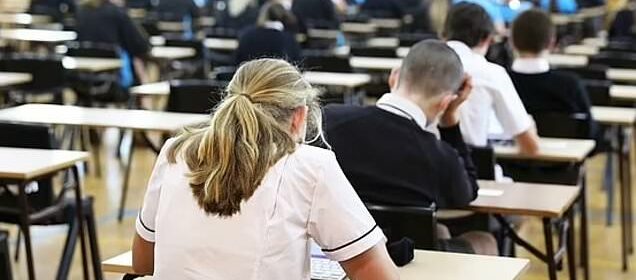Primary school Sats results in reading fall following a notorious exam

Primary school Sats results in reading fall following a notorious exam that reduced pupils to tears and left staff struggling to understand the questions
- Pupils needed five lower marks than normal in test to reach the ‘expected’ level
Primary schools Sats results in reading have fallen this year after a notorious exam that reduced pupils to tears.
The Key Stage 2 Sats results, which assess pupils’ attainment in literacy and maths by the end of Year 6, showed that 73 per cent achieved the expected standard in reading.
This was down from 75 per cent in 2022.
It comes after parents and teachers complained that this year’s Sats reading paper was too difficult, with reports that even staff struggled to understand the questions while children were seen sobbing over their paper.
Examiners had to moderate the scoring so that pupils – all aged 10 or 11 – needed five lower marks than normal in the test to reach the ‘expected’ level.
Overall, 59 per cent of pupils met the expected standard in the three key areas of reading, writing and maths this year – the same as last year.
Examiners had to moderate the scoring so that pupils – all aged 10 or 11 – needed five lower marks than normal in the test to reach the ‘expected’ level
In 2019, before the Covid pandemic that severely disrupted pupils’ education, 65 per cent achieved the expected standard in all three areas.
But even that was well below the government target for 90 per cent of children to leave primary school having achieved the expected standard acrposs all three areas by 2030.
The Department for Education (DfE) said this year’s cohort of Year 6 pupils may have suffered from disruption to their learning during the pandemic.
In other individual subjects, scores were either higher than last year or the same.
In total, 73 per cent of pupils met the expected standard in maths, up from 71 per cent in 2022, while 71 per cent met the expected standard in writing, up from 69 per cent last year.
Meanwhile, 80 per cent met the expected standard in science, up from 79 per cent in 2022, while 72 per cent met the expected standard in grammar, punctuation and spelling, unchanged from last year.
The Sats reading paper in May was met with widespread complaints for making 11-year-olds sit questions that were ‘up to GCSE level’.
Even high ability pupils were unable to finish the paper, which included questions on an article from the New York Times about bat colonies in Texas and extracts from a book advertised for ‘young adults’.
An example of a key stage 2 English reading exam
Paul Whiteman, general secretary of the NAHT school leaders’ union, said: ‘Our members raised significant concerns about the difficulty of the reading paper this year and the impact it had on children.
‘The threshold for the expected standard is five marks lower than last year, and the lowest since 2017 – this is significant and clear recognition that this was a more challenging test for children.’
Schools minister Nick Gibb said: ‘Whilst those meeting the expected standard in reading is down from 2022 from 75 per cent to 73 per cxent, it remains higher compared to 2016 (66 per cent) and is in line with pre-pandemic standards (73 per cent met the expected standard in reading in 2019).’
Mr Gibb said England came fourth out of 43 countries that tested the reading levels of nine and 10-year-olds in the latest Progress in International Literacy Study (PIRLS).
He added: ‘Following the impact of the pandemic, it was expected that there may be lower levels of attainment while children caught up on lost learning.
‘The progress that has been made in recovering from the pandemic is testament to the hard work of teachers and teaching assistants across the country.’
Tiffnie Harris, primary specialist at the Association of School and College Leaders (ASCL), said: ‘It is extremely difficult to raise standards when schools are struggling to put a qualified teacher in front of every class.
‘Primary education is very poorly funded to the point where small schools are sometimes close to being financially unsustainable.
‘The Government’s target of 90 per cent of children achieving the expected standard in reading, writing and maths is a pipe-dream in these circumstances.’
Source: Read Full Article

